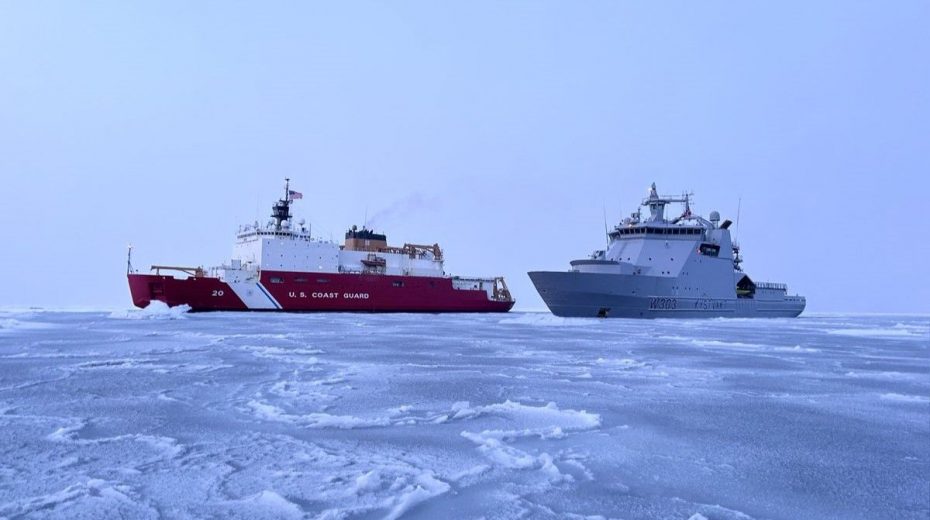
As we further examine U.S. strategies in the Arctic, it is essential to consider what developments lie ahead within the next 10 to 15 years.
The exclusive zones option
Looking forward to the period between 2025 and 2034, the Central Arctic Ocean (CAO) will likely experience occasional ice-free conditions in September, though these will not be consistently reliable from year to year. This unpredictability, resulting from climatic and geological fluctuations, will hinder the establishment of economic ventures that require uninterrupted or frequent access. Consequently, only initiatives not dependent on regular presence will probably persist, while others may remain limited or experimental.
Tourism is positioned to see moderate growth, particularly cruise operations within the Exclusive Economic Zones (EEZs) of Arctic nations. This trend is fueled by both ongoing shipbuilding and increased interest in polar tourism. Nevertheless, cruises strictly within the CAO will remain rare and targeted at niche markets, given the requirement for ice-strengthened vessels and conditions unsuitable for large-scale tourism.
Scientific research is expected to continue steadily, possibly expanding in scope. Primary efforts will include detailed seabed mapping—for instance, with the aim of future submarine cable installations—and studying fish populations in preparation for potential amendments to the CAO Fisheries Agreement (CAOFA). Environmental impact evaluations related to entrepreneurial initiatives such as deep-sea mining will also be conducted, though such activities are expected further south within Arctic EEZs rather than directly in the CAO’s core.
Among infrastructure proposals, a notable project is the installation of a transpolar submarine cable, like Polar Connect, designed to enhance global communications by providing redundancy and lowering data transmission delays. Despite significant costs, this infrastructure is likely to attract growing interest.
The limited navigability of the CAO during this decade will deter investments in ventures more easily and affordably conducted nearer to shore. This includes exploration and extraction of fossil fuels, mining operations, and offshore wind farm development. Likewise, shipping goods via the CAO will remain economically impractical due to insufficient infrastructure, crew hazards, and lack of commercial incentives.
Given the sparse economic activity, a permanent military presence or continuous monitoring is not anticipated. Instead, exercises and patrols will largely remain within Arctic states’ EEZs, serving primarily as defensive demonstrations or strategic messaging.
Regulatory developments are also on the horizon. The International Seabed Authority (ISA) is anticipated to issue detailed rules on deep-sea mining in international waters. Should these regulations be stringent, Arctic countries that have submitted claims to the Commission on the Limits of the Continental Shelf (CLCS) may focus on those seabed regions beyond ISA’s scope as potential mining sites. Overlapping claims—particularly from Canada, Denmark, and Russia—in mineral-rich ocean ridges could lead to heightened tensions among these states.
New fishing opportunities
From 2035 to 2049, accessibility to the CAO will improve slightly, with ice-free periods possibly lasting under one month annually. This advancement will allow for the cautious expansion of activities requiring neither long-term preparation nor prolonged presence, with fishing emerging as the most feasible enterprise.
Beginning in 2037, the CAO Fisheries Agreement (CAOFA) will automatically renew every five years unless opposed by any signatory. The decision to not extend the agreement will depend on the urgency to exploit new fish resources and the available scientific data regarding species, stock sizes, and sustainable harvesting levels. Asian signatories and the European Union may voice opposition to renewal, favoring a shorter temporary ban than the original 16 years. Such objections must be expressed no less than six months before the moratorium’s expiration or during the final party meeting prior to the ban’s conclusion.
Thus, as early as 2036, involved nations might start strategizing to open fishing access in the CAO and initiate preliminary dialogue on establishing a regional fisheries management organization (RFMO). However, formalizing such an entity would require lengthy negotiations before becoming operational.
Some countries already possess long-range fishing fleets capable of operating seasonally in the CAO, including China, Japan, South Korea, Taiwan, and members of the European Union. Notably, China, the world’s largest fish consumer, has depleted many of its coastal stocks, prompting expansion of its extensive deep-sea fleet globally. While much of China’s fishing is lawful and regulated, a considerable portion is illegal or unreported.
China’s 2022 Five-Year Plan for National Fisheries Development outlines growth targets by 2025, emphasizing sustainability via technological advancements such as artificial intelligence for aquaculture and catch quotas. Given the scale of domestic demand and fleet size, China’s interest in accessing commercially exploitable Arctic fisheries is expected to increase if conditions and access permit.
Nevertheless, scientific insights into CAO ecosystems will remain quite limited for the time being. Ice-free windows lasting only a few weeks restrict fishing to nations equipped with both deep-sea vessels and ice-strengthened ships. Therefore, ‘incursion fishing’—opportunistic ventures appearing only when navigable conditions align and economically viable stocks are identified—seems the most plausible scenario. These expeditions would depend on discovering commercially valuable species or abundant quantities of less valuable fish to justify economic efforts.
It is also possible that the CAO hosts no stocks of sufficient commercial interest, either due to biological factors like unpalatable species or the relatively small size of fish populations. Without clear evidence supporting ecological and economic sustainability, the fishing moratorium may well be extended another five years.
Additional uncertainty arises from the 2023 Treaty on Biodiversity in Areas Beyond National Jurisdiction (BBNJ), which permits the designation of marine protected areas on the high seas. Implementing BBNJ protections in the CAO could prohibit all economic endeavors—including fishing, energy extraction, mining, shipping, and tourism. Yet, this outcome seems unlikely since neither Russia nor the United States have signed the treaty, and non-Arctic states party to CAOFA are unlikely to accept permanent closure after securing a consultative role for future commercial use. Moreover, a closed CAO would increase traffic along the Northern Sea Route (NSR), carrying geopolitical consequences that some nations might oppose, especially those related to Russia.
Experimentation with freight transit on the Transpolar Sea Route (TSR) may occur in September during this time-frame, but most commercial shipping will continue favoring traditional passages like Suez and Panama. Arctic transport will remain centered on the NSR, primarily channeling Russian gas and minerals toward Asian markets. Mineral and hydrocarbon shipments will continue along established lines, such as from Canada’s Mary River mineral deposits to global ports.
Ships will also need to comply with the International Maritime Organization’s (IMO) ban on heavy fuel oil (HFO) usage, fully enforced by 2029. HFO, common in containerized vessels, contributes significantly to pollution and ice melt through black carbon emissions. In addition, the IMO has set ambitious objectives for maritime climate neutrality by 2050 and adoption of cleaner fuels by 2030, prompting significant shifts in shipping operations and port infrastructure, including facilities supporting the TSR.
Simultaneously, exploration efforts in the CAO are anticipated to continue or intensify to support projected mining activities, assuming ISA regulations permit such work. Rising global competition for critical minerals could accelerate mapping and resource identification initiatives by states and commercial interests.
By this period, Arctic-capable fleets will be enhanced with new icebreakers from countries like the United States, Russia, China, Finland, and Sweden, boosting their operational capacity. The U.S. will deploy three Polar Security Cutters, Canada plans new Arctic patrol vessels, and Denmark along with Norway will maintain plans to expand their polar-capable frigates and patrol boats. This buildup will enable a firmer, ongoing presence in the CAO. Correspondingly, an uptick in fishing or commercial traffic will necessitate strengthened maritime oversight, including inspections and enforcement of international agreements.






